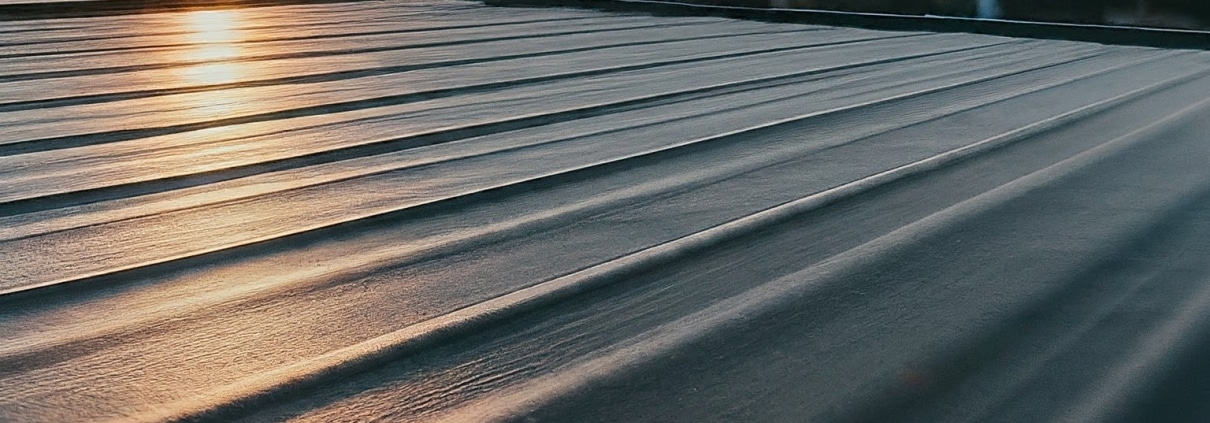Choosing the Right Materials for Industrial Roofing Projects
When it comes to industrial roofing, selecting suitable materials is crucial to your facility’s longevity, performance, and energy efficiency. Industrial roofs face unique challenges compared to residential or commercial roofs, including exposure to chemicals, heavy foot traffic, and extreme weather conditions. To ensure your project is successful, choosing roofing materials that can withstand these demands while providing durability, cost-effectiveness, and sustainability is essential.
This guide will explain the various types of industrial roofing materials, their benefits, and how to determine the best fit for your specific project needs.
Factors to Consider When Choosing Industrial Roofing Materials
Before we dive into the specific materials, it’s important to understand the key factors you should consider during the industrial roof material selection process:
- Durability: Industrial buildings are often subject to harsh environmental conditions. The roofing material must withstand wind, rain, temperature fluctuations, and potential exposure to chemicals or pollutants.
- Cost: Balancing initial installation costs with long-term maintenance and repair expenses is key. While some materials may be cheaper upfront, they might be less cost-effective in the long run.
- Energy Efficiency: Roofing materials significantly affect a building’s energy efficiency. Energy-efficient industrial roofing can reduce energy consumption, lower costs, and contribute to sustainability goals.
- Environment: The local climate and environmental conditions around your facility should heavily influence your choice of roofing material. Regions with extreme heat, cold, or high humidity levels may require specific roofing types.
- Maintenance Requirements: Certain materials require more frequent maintenance than others. Consider the material’s maintenance needs and life cycle before making a final decision.
Common Types of Industrial Roofing Materials
Various roofing options are available for industrial projects, each with distinct advantages and challenges. Here is a comparison of some of the best materials for industrial roofing:
Metal Roofing
- Durability: Metal roofing is one of the most durable options available. It is resistant to weather, fire, and impact, making it ideal for industrial facilities in areas with extreme weather conditions or high fire risks.
- Energy Efficiency: Metal roofs can be highly energy efficient, particularly when paired with reflective coatings that reduce heat absorption. This can help lower cooling costs in warmer climates.
- Cost: Although metal roofing can have a higher upfront cost, its long life expectancy and minimal maintenance requirements make it a cost-effective option over time.
- Maintenance: Metal roofing is relatively low-maintenance, but occasional inspections are recommended to check for corrosion or damage from environmental exposure.
- Best for: Facilities in regions with extreme weather conditions or for industries requiring highly durable and long-lasting materials.
Thermoplastic Polyolefin (TPO) Roofing
- Durability: TPO roofing is known for its resistance to chemicals, UV radiation, and punctures. This makes it a great choice for industrial settings that involve chemical exposure or heavy foot traffic on the roof.
- Energy Efficiency: TPO is a reflective roofing material, meaning it can reflect UV rays and reduce heat absorption, making it an excellent option for energy efficiency.
- Cost: TPO roofing is relatively affordable compared to other roofing options and offers a good balance between price, performance, and energy efficiency.
- Maintenance: TPO roofing requires minimal maintenance, but regular inspections can help extend its lifespan.
- Best for: Facilities looking for a cost-effective, energy-efficient option in areas with exposure to chemicals or intense sun.
Ethylene Propylene Diene Monomer (EPDM) Roofing
- Durability: EPDM is a type of synthetic rubber roofing that is highly durable, especially in environments with extreme temperature fluctuations. It’s resistant to UV rays and weathering, making it a reliable long-term option.
- Energy Efficiency: While EPDM typically comes in black, which absorbs heat, white EPDM options are available to improve energy efficiency by reflecting sunlight and reducing heat absorption.
- Cost: EPDM roofing tends to be one of the more affordable materials in terms of upfront costs and long-term maintenance.
- Maintenance: EPDM is relatively low-maintenance but should be inspected regularly for punctures or damage, especially in areas prone to debris accumulation.
- Best for: Industrial facilities in areas with varying temperatures or for those seeking a budget-friendly option with proven durability.
Modified Bitumen Roofing
- Durability: Modified bitumen is a multilayered roofing system that is highly resistant to weather, impact, and temperature extremes. This makes it suitable for facilities in regions with fluctuating climates.
- Energy Efficiency: Modified bitumen can be made more energy-efficient by adding reflective coatings, which help reduce the amount of heat absorbed by the building.
- Cost: While modified bitumen roofing is more expensive than single-ply membranes like TPO or EPDM, its multilayered construction offers excellent durability and protection.
- Maintenance: Regular inspections are necessary to check for tears or leaks, but modified bitumen can last for decades when properly maintained.
- Best for: Facilities needing a strong, impact-resistant roof in regions with unpredictable weather patterns.
Energy-Efficient Industrial Roofing: Why It Matters
Industrial facilities are large energy consumers, and the type of roofing material chosen can significantly impact energy usage. Installing energy-efficient industrial roofing can help reduce the building’s cooling and heating costs, lower carbon emissions, and contribute to sustainability efforts.
The U.S. Department of Energy has highlighted the importance of reflective roofing materials that help manage heat gain and loss, resulting in energy savings. Reflective coatings, TPO, and light-colored metal roofing are excellent options for facilities looking to improve energy efficiency. Learn more about the benefits of energy-efficient roofing on the U.S. Department of Energy’s website.
How to Choose the Right Industrial Roofing Material
Selecting the right material for your industrial roofing project comes down to assessing your facility’s specific needs and conditions. Here are four steps to guide your decision:
- Evaluate Your Facility’s Environment: Consider the weather conditions, potential exposure to chemicals, and the level of foot traffic your roof will endure.
- Balance Cost with Durability: While budget is always a concern, opting for a cheaper material may lead to more frequent repairs or replacements in the long run.
- Prioritize Energy Efficiency: If your facility is in a region with extreme temperatures, energy-efficient materials like TPO, metal roofing with reflective coatings, or white EPDM can help reduce energy consumption.
- Consult with a Professional: Every industrial facility is unique. Consulting with an expert, like those at Highland Roofing, ensures you select the right roofing materials for your project. Contact us today to schedule a consultation or get a quote.
Choosing the best materials for your industrial roofing project is critical to ensuring long-lasting performance, energy efficiency, and minimal maintenance. Whether you’re considering metal, TPO, EPDM, or modified bitumen, each material has unique advantages based on your facility’s needs.
At Highland Roofing, we specialize in helping businesses choose the most appropriate materials for their industrial roofing needs. For professional advice or a quote on your next project, reach out to us today!







